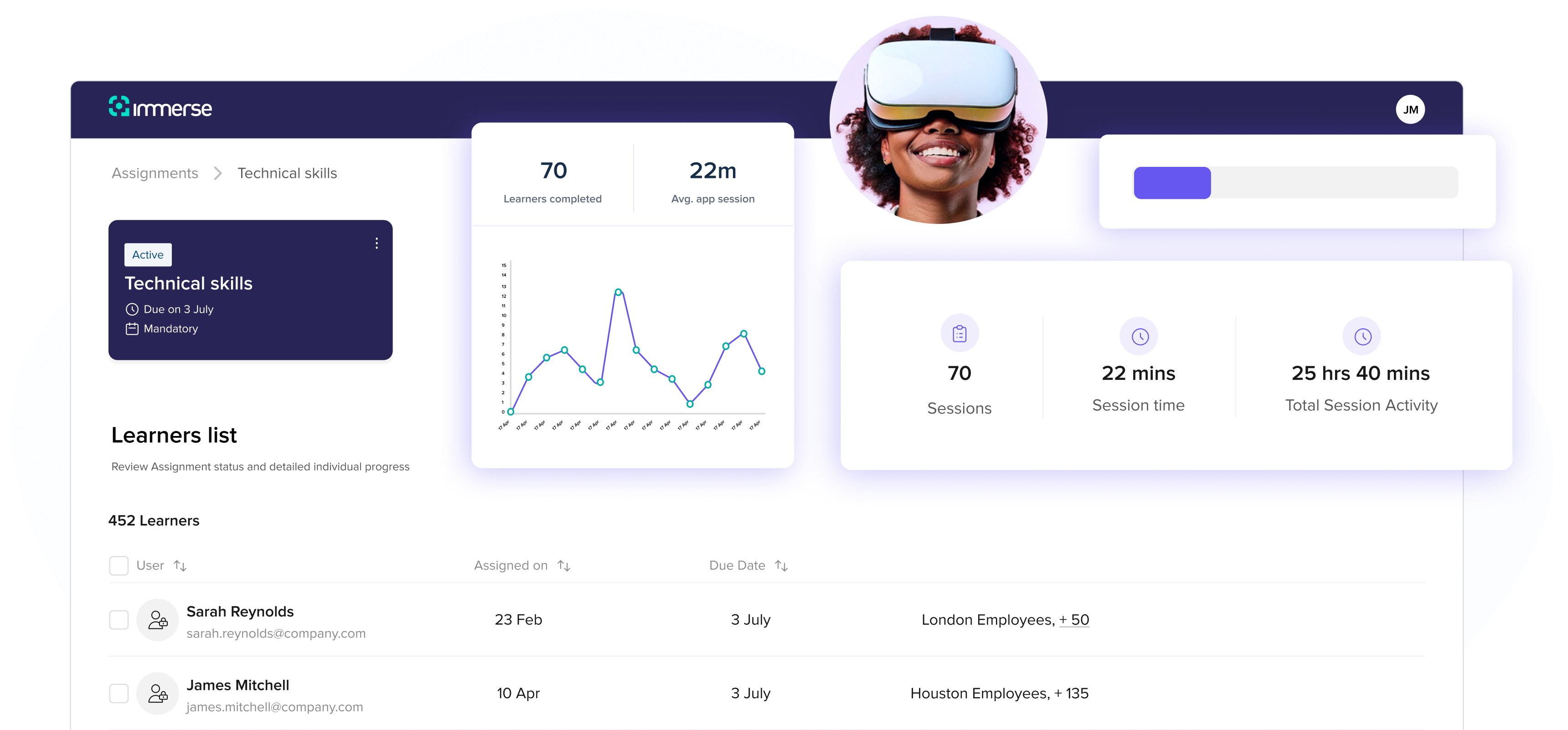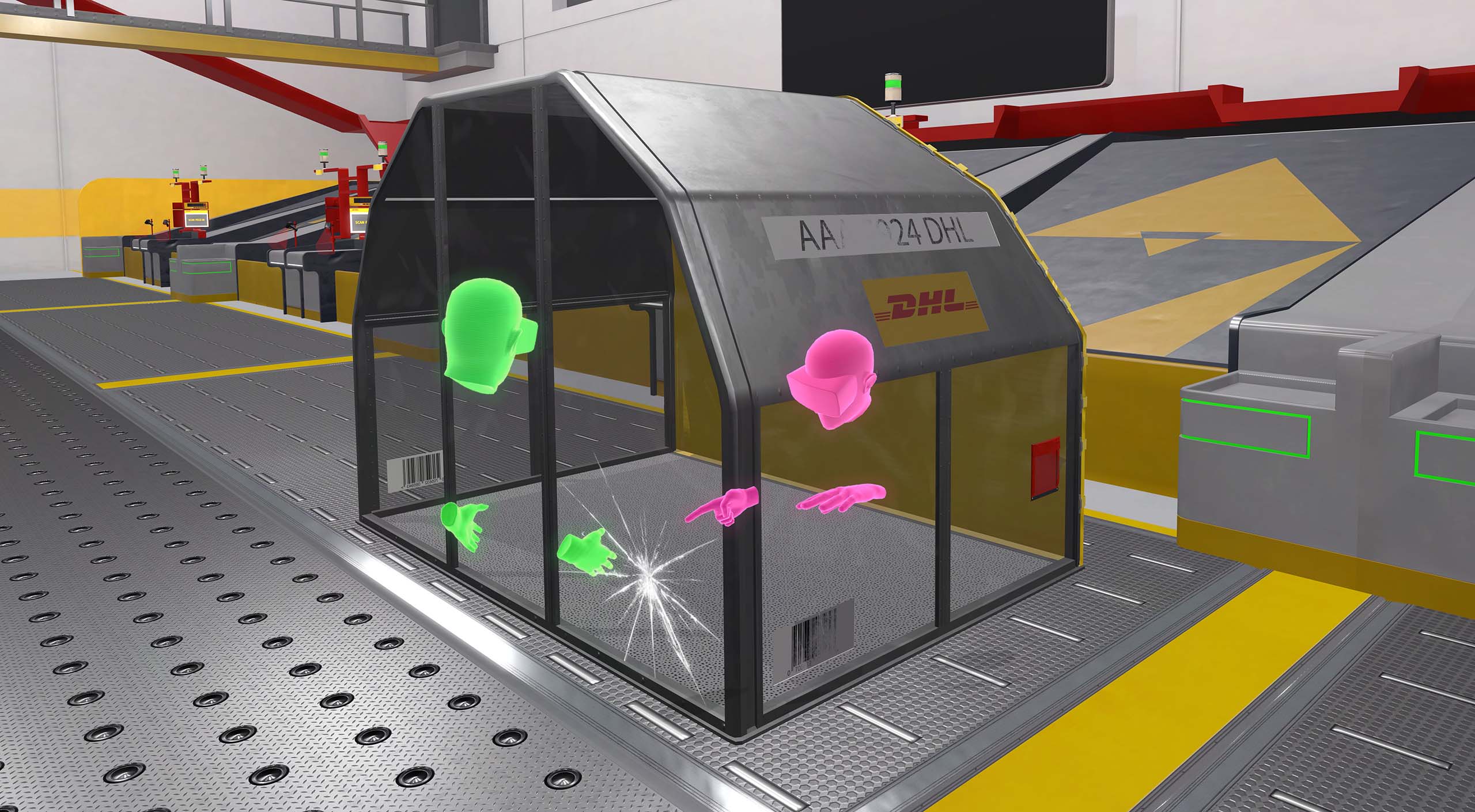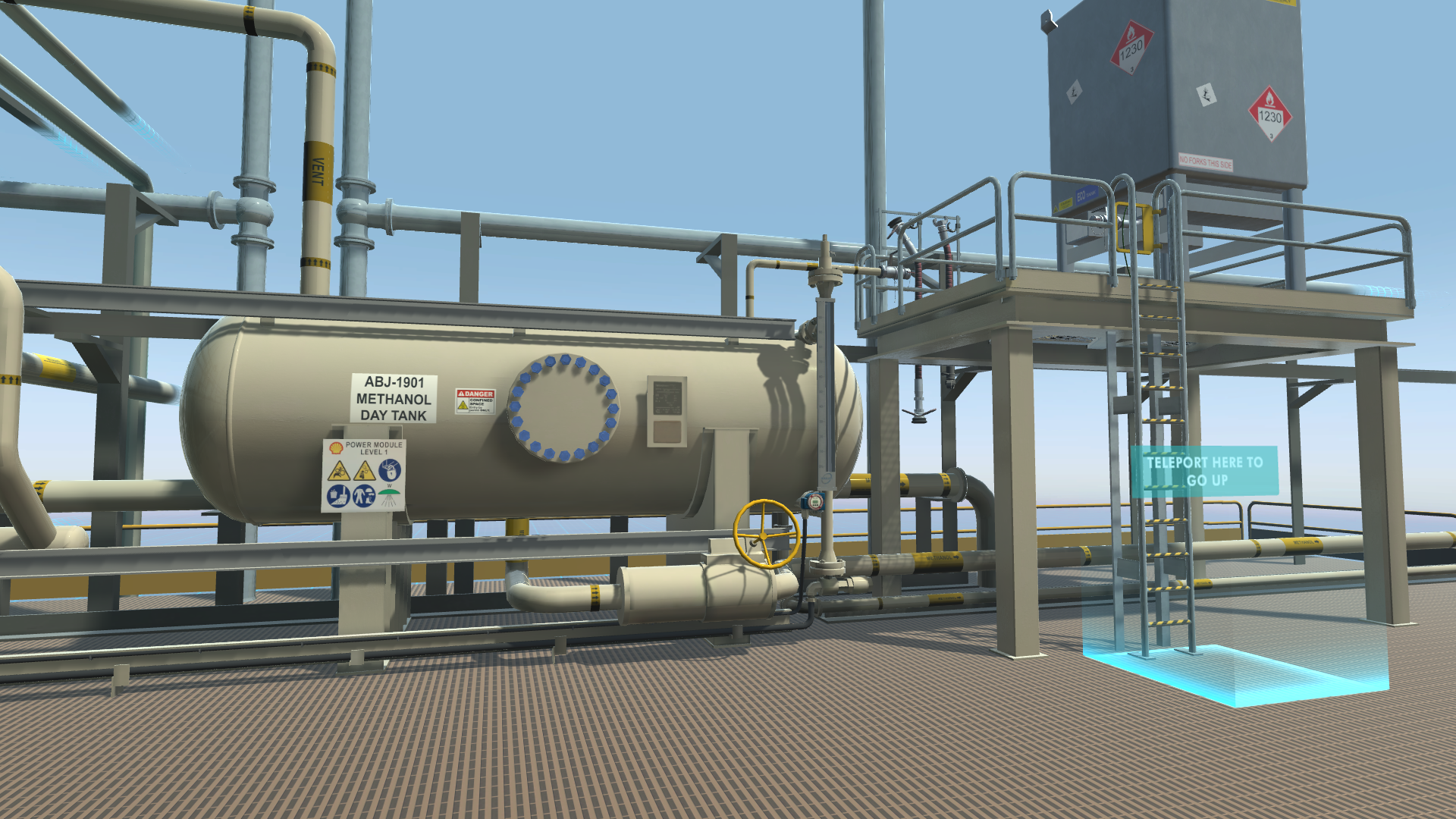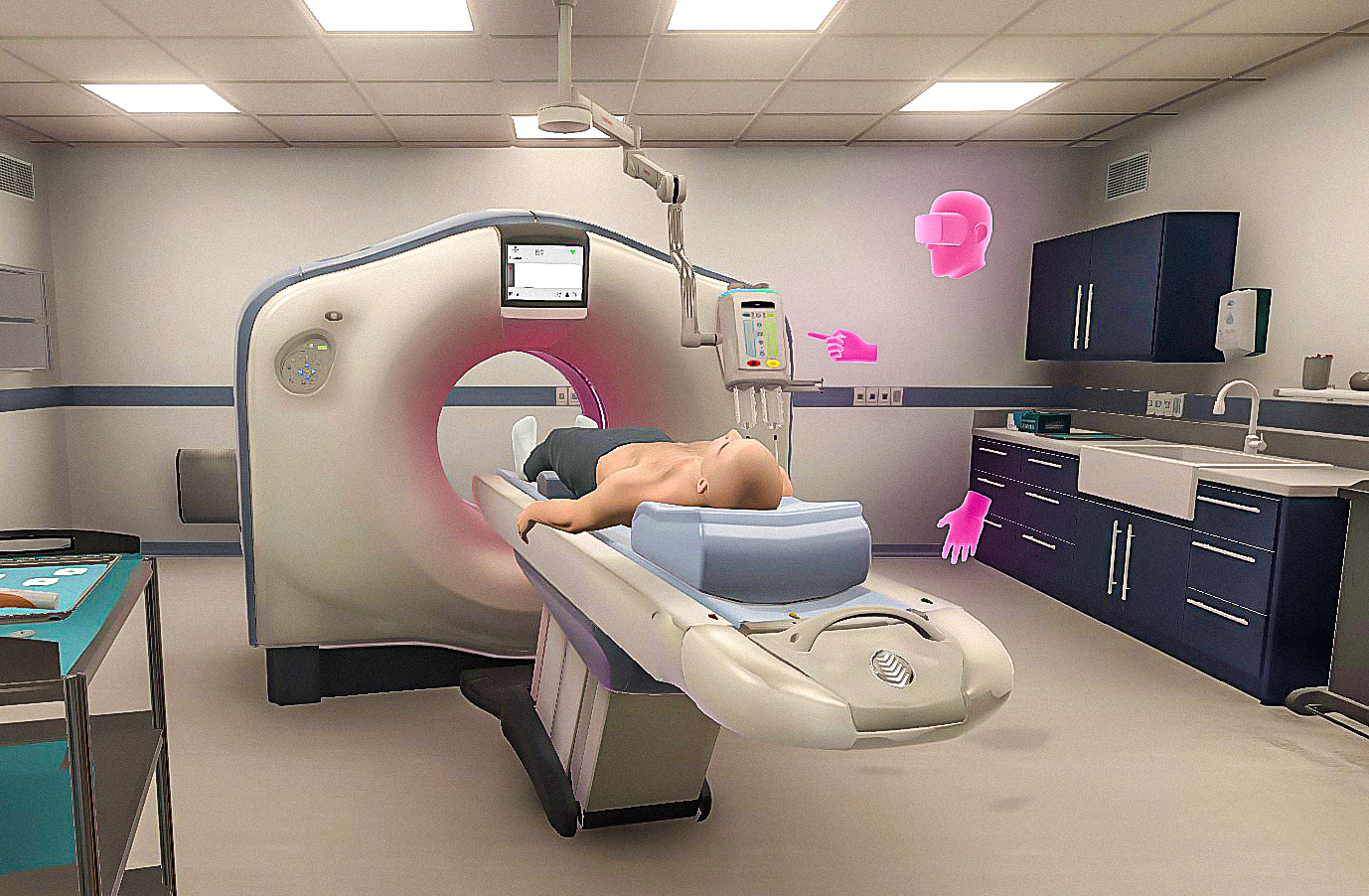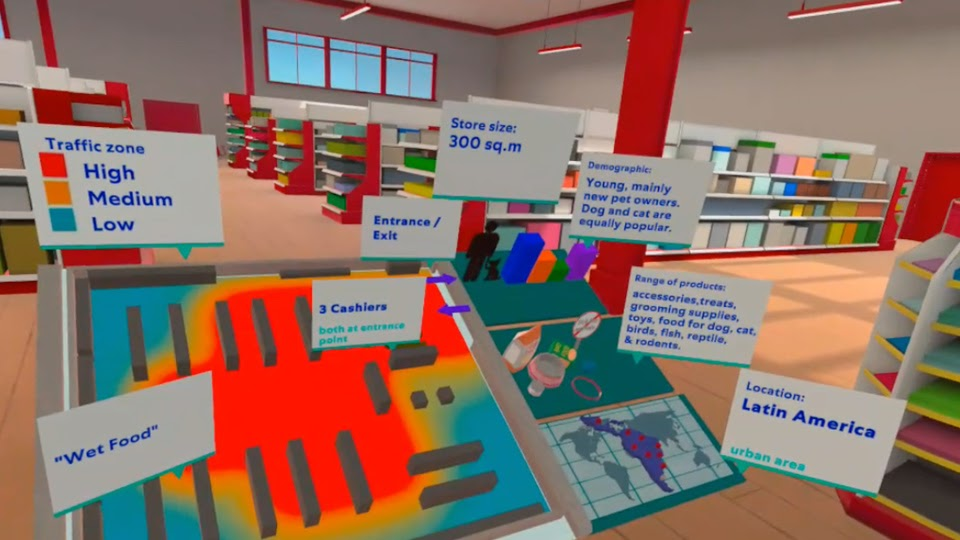
Virtual reality (VR) is now established as a transformative tool for business training, offering an immersive learning experience that traditional methods can’t match. By engaging employees in a virtual environment, companies can enhance training outcomes and streamline the learning process.
This technology-driven approach provides a variety of benefits, from improved safety to reduced training costs, that drive business growth and operational efficiency.
Let´s explore how VR training can help you drive your business toward its goals.
Increase employee engagement and knowledge retention
VR training transforms traditional learning into immersive, interactive experiences, boosting employee engagement to new heights. This heightened level of interaction encourages employees to immerse themselves in training scenarios, leading to a deeper understanding of the learning material. As a result, they retain information and are more likely to apply their knowledge effectively in the workplace.
The immersive nature of VR allows employees to visualize complex concepts and practice skills in a safe environment, making learning more enjoyable and less daunting. This increased engagement not only improves employee morale but also contributes to a more motivated and proactive workforce, fostering a culture of continuous learning and development.
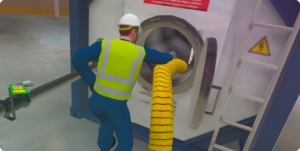
Enable measurable outcomes
Virtual reality training offers businesses a platform for measurable outcomes, providing tools to track and analyze employee progress in real-time. This capability allows trainers to assess individual and group performance, identifying trends and areas needing improvement. The data-driven approach enables companies to quantify the effectiveness of their training programs and adjust them as needed to achieve specific goals.
With VR’s detailed analytics, businesses can create personalized training paths for employees, tailoring the learning experience to address specific skill gaps. This precision ensures that training resources are used efficiently, leading to improved productivity and a more competent workforce.
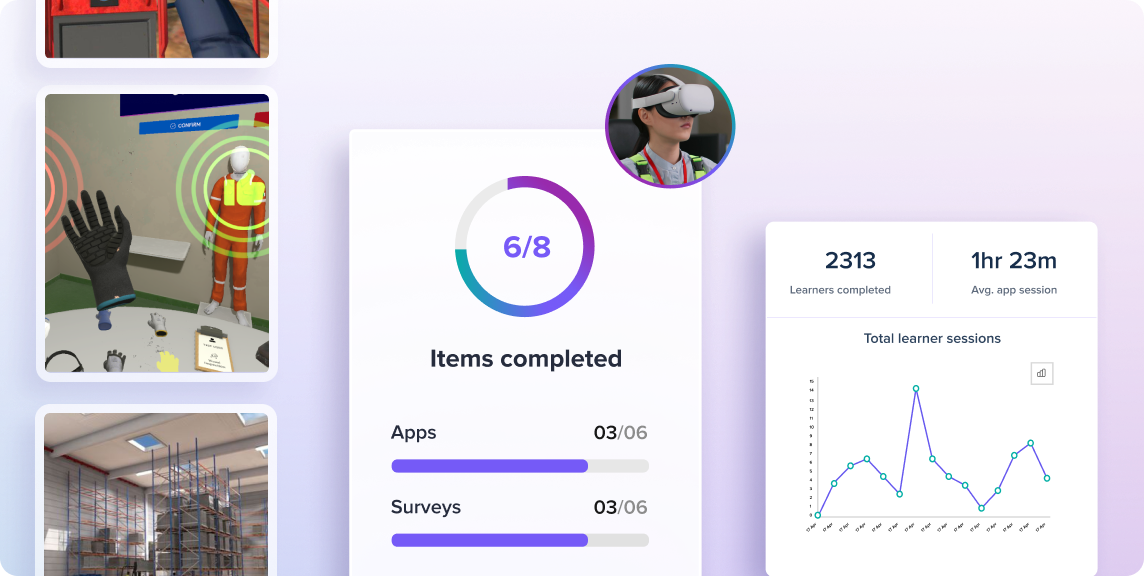
Accelerate time to competency
VR training accelerates the time it takes for employees to reach competency by offering hands-on learning in a controlled, risk-free environment. Employees can engage in virtual simulations that mimic real-world scenarios, allowing them to practice complex tasks as many times as needed to build confidence and proficiency.
This iterative learning process shortens the learning curve, enabling employees to perform their roles effectively in a shorter time frame. The ability to repeat scenarios and receive instant feedback also helps employees correct mistakes and refine their skills, leading to higher quality outcomes. This accelerated approach is particularly beneficial for industries with high turnover rates, as it allows new hires to become productive team members more quickly.
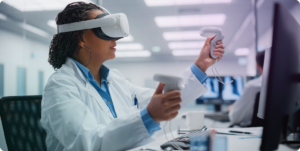
Improve workplace safety
By simulating potentially hazardous scenarios, VR training significantly improves workplace safety. Employees can learn safety protocols and practice emergency procedures without facing real-world risks, reducing the likelihood of accidents and injuries. This approach creates a safer working environment and ensures that employees are better prepared to handle emergencies.
VR safety training can cover a wide range of topics, from operating heavy machinery to responding to fires or chemical spills, allowing employees to gain valuable experience in a safe setting. This not only protects employees from harm but also helps businesses avoid costly safety incidents and potential legal liabilities.
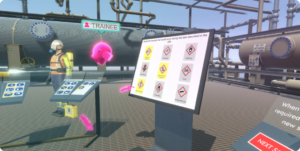
Reduce downtime and business interruption
With VR training, businesses can minimize downtime and avoid operational disruptions often caused by traditional training methods. Virtual training eliminates the need to shut down equipment or pause production for training purposes, allowing business operations to continue uninterrupted.
Employees can access VR training modules at their convenience, fitting training into their schedules without disrupting workflow. This flexibility enhances productivity and reduces the impact of training on day-to-day operations. Additionally, VR training can be used for refresher courses or advanced skills development, enabling continuous learning without causing significant interruptions to business activities.

Lower training costs
Despite initial setup costs, VR training ultimately lowers training expenses by reducing the need for travel, physical materials, and facility rentals. Businesses can deliver training remotely, allowing employees to access sessions from anywhere, thus saving on transportation and accommodation costs and contributing to a more environmentally friendly approach.
This cost-efficiency allows companies to invest in other areas, enhancing overall business performance. Furthermore, the scalability of VR training means businesses can train a larger workforce without proportional increases in cost, offering significant long-term savings.
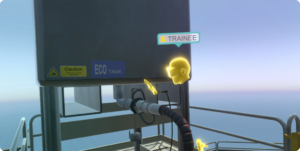
Standardize and scale training
VR training provides a standardized approach to learning, ensuring consistent instruction across all locations and departments. This uniformity is crucial for businesses seeking to scale operations while maintaining high training standards. With VR, companies can deliver the same high-quality training to a global workforce, regardless of geographical location or language barriers.
This standardization helps businesses maintain a consistent corporate culture and ensures that employees receive the same level of training, leading to a cohesive and unified workforce. The ability to scale training efficiently allows companies to grow and expand their operations without compromising the quality of employee training and development.
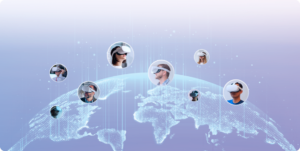
Customize training programs
The flexibility of VR training allows businesses to create customized programs tailored to their specific needs. Companies can design scenarios that address unique industry challenges, such as safety protocols in manufacturing or customer service skills in retail, ensuring that training is relevant and effective.
This customization helps businesses align their training programs with broader organizational goals, leading to a more focused workforce capable of addressing industry-specific tasks with confidence. Additionally, customized VR training can be used to onboard new employees, providing them with an interactive introduction to company policies, values, and culture. This personalized approach to training fosters employee engagement and supports long-term career development, contributing to higher employee retention rates.
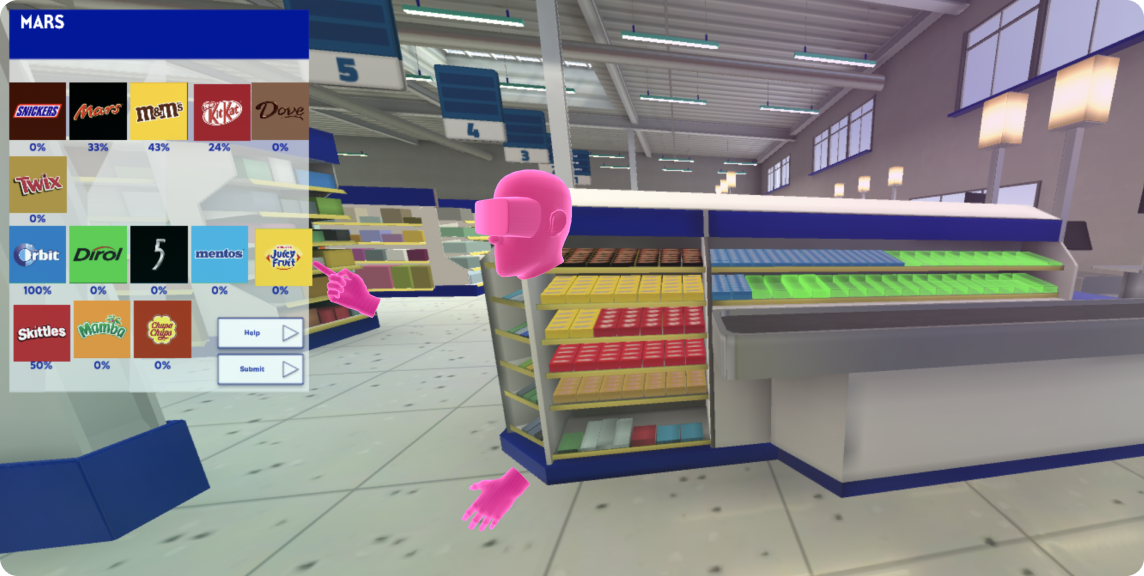
Deliver VR training to learners and track results, easily
Provide immersive experiences in minutes and measure success with simple technology that just works—so you can focus on what matters most.
Explore product